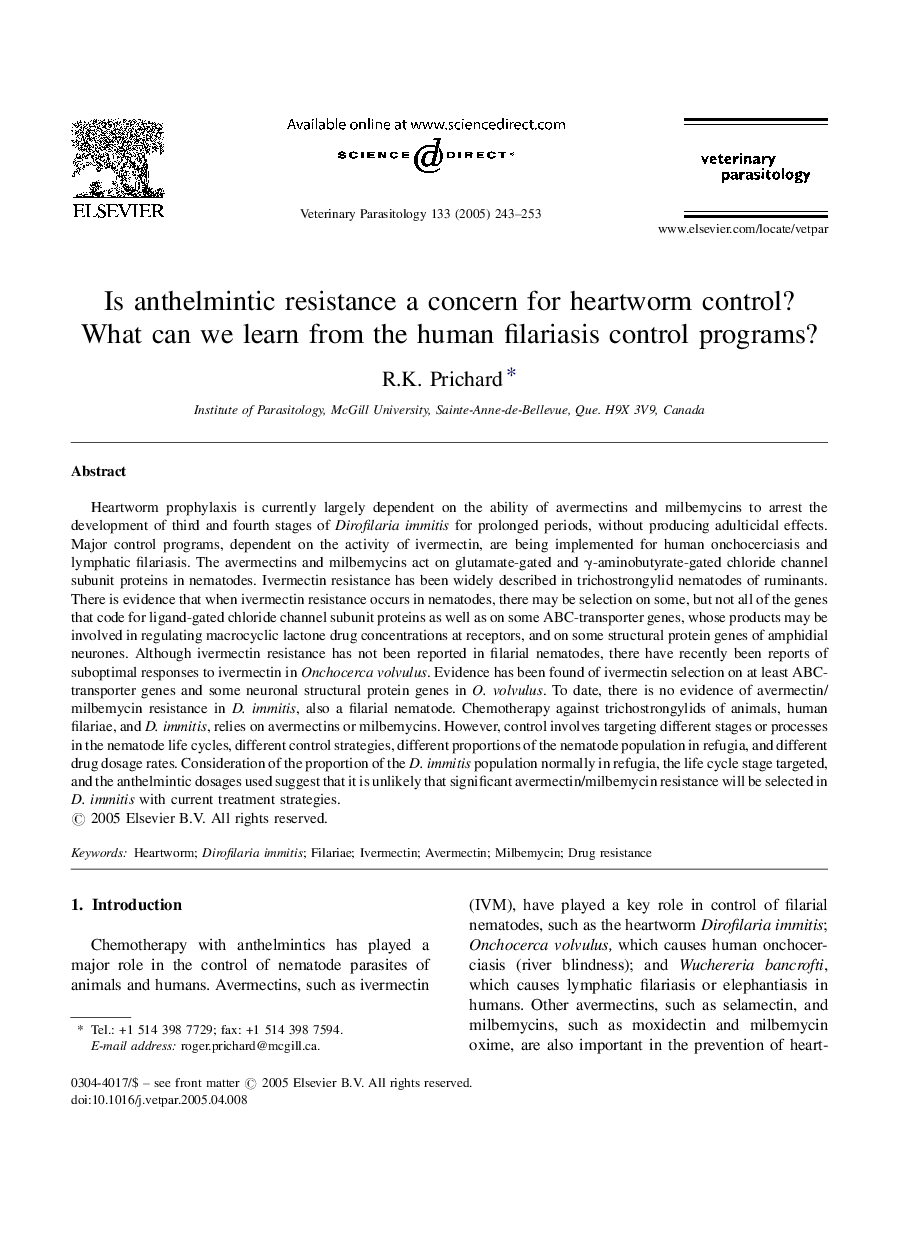| Article ID | Journal | Published Year | Pages | File Type |
|---|---|---|---|---|
| 8991101 | Veterinary Parasitology | 2005 | 11 Pages |
Abstract
Heartworm prophylaxis is currently largely dependent on the ability of avermectins and milbemycins to arrest the development of third and fourth stages of Dirofilaria immitis for prolonged periods, without producing adulticidal effects. Major control programs, dependent on the activity of ivermectin, are being implemented for human onchocerciasis and lymphatic filariasis. The avermectins and milbemycins act on glutamate-gated and γ-aminobutyrate-gated chloride channel subunit proteins in nematodes. Ivermectin resistance has been widely described in trichostrongylid nematodes of ruminants. There is evidence that when ivermectin resistance occurs in nematodes, there may be selection on some, but not all of the genes that code for ligand-gated chloride channel subunit proteins as well as on some ABC-transporter genes, whose products may be involved in regulating macrocyclic lactone drug concentrations at receptors, and on some structural protein genes of amphidial neurones. Although ivermectin resistance has not been reported in filarial nematodes, there have recently been reports of suboptimal responses to ivermectin in Onchocerca volvulus. Evidence has been found of ivermectin selection on at least ABC-transporter genes and some neuronal structural protein genes in O. volvulus. To date, there is no evidence of avermectin/milbemycin resistance in D. immitis, also a filarial nematode. Chemotherapy against trichostrongylids of animals, human filariae, and D. immitis, relies on avermectins or milbemycins. However, control involves targeting different stages or processes in the nematode life cycles, different control strategies, different proportions of the nematode population in refugia, and different drug dosage rates. Consideration of the proportion of the D. immitis population normally in refugia, the life cycle stage targeted, and the anthelmintic dosages used suggest that it is unlikely that significant avermectin/milbemycin resistance will be selected in D. immitis with current treatment strategies.
Related Topics
Life Sciences
Agricultural and Biological Sciences
Animal Science and Zoology
Authors
R.K. Prichard,
